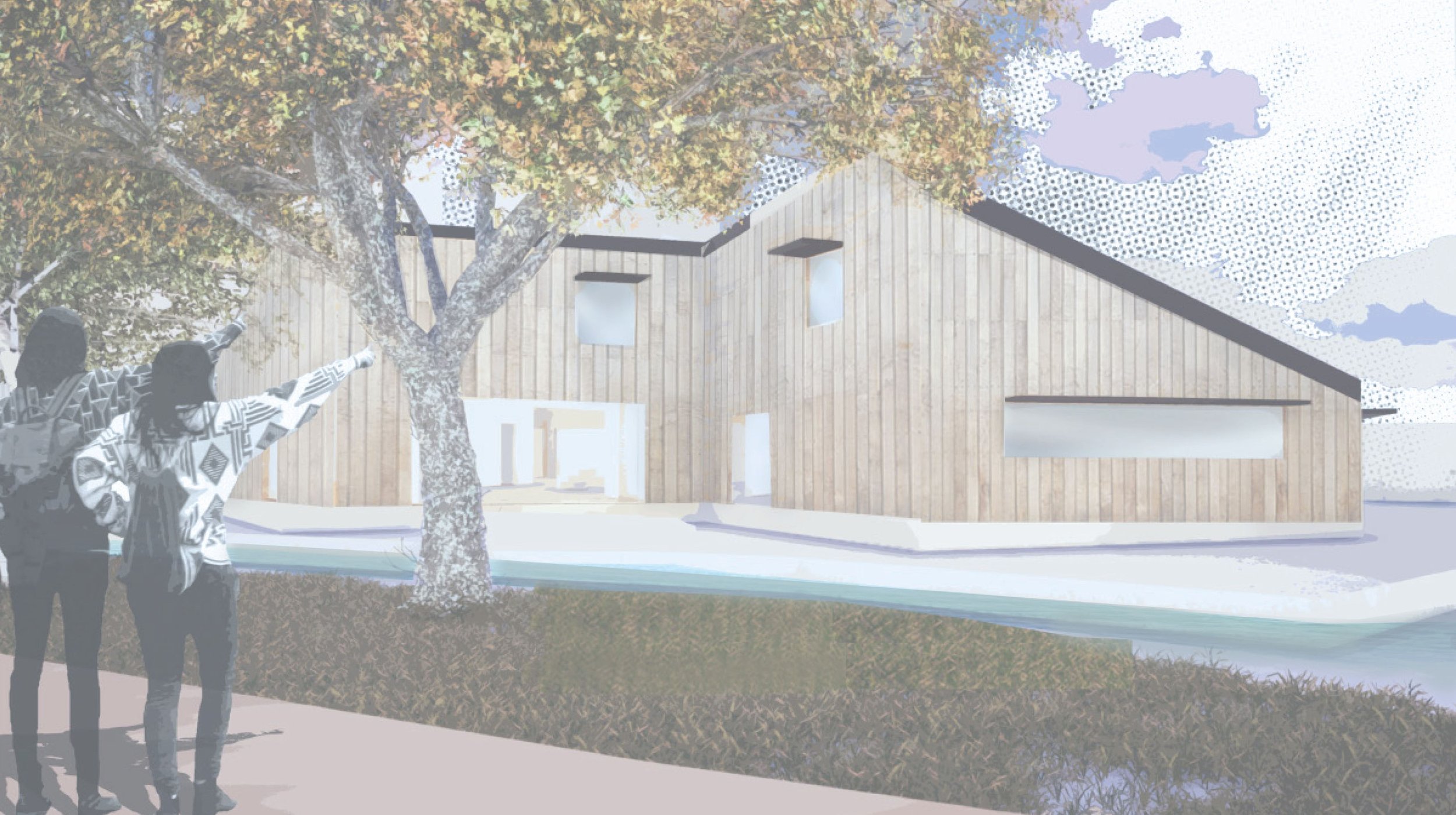
LANDSCAPE DESIGN
THE PERFUMERS HOUSE AND GARDEN
Site: The Greyfriar gardens, Canterbury, Kent, UK.
The Perfumers House is a commercial building with connecting flower and aromatic garden, and a fruit production site. This project is intended to be used as a shop, micro production as well as a garden for public visit. The project is divided into three parts; the “house”, the island of flower and aromatics, and the island of fruits and herbs. as well as a old historical chapel can be found in between the two islands, all divided by the River Stour on both sides.
The house or building is a small scale producer of perfume and oils, harvested from the garden, made and sold at the house. Only by walking through you can visit the gardens that is connected to the house by two connecting bridges, that takes you from one island to the other.
On the first island you enter a resting space in between the two arched bridges, with a few scattered benches along side the dominant walkways. The island is a large meadow like field with flowers,tufted glass and aromatic plants. Only by walking on the elevated walkways, you can walk slowly through the field of raised scented plants. The walkways on the first island would be more abstract and flowing through the flowers garden, underneath the few scattered trees such as cherry trees and silver birch trees for both shading and aesthetic purposes. Two "resting and view" decks would be found close to the chapel for views and entrances to the chapel itself.
By walking over to the Second island you find yourself the way to the fruit production, or follow the aromatic herb beds to chapel entrance. The walkways would be more straight and true to the original design of the island garden space from the 12th century. The lesser smaller paths will act as the separator of the different fruit trees and aromatics. Where the previous brick wall was located, it would be replaced with a similar wall only in fiber concrete. The "intention of the wall is to provide shelter from the prevailing wind. All the walk- ways will be raised, allowing the lands- cape to continue to grow under the path. This is also to prevent muddiness, but also to make it easy to move around the landscape during possible flooding.
Overall, the gardens has since the 12th century been used mostly as a place of healing, and therefore I wished to keep that tradition by opening this production site to the public. For the visitors to experience the lovely scents, the river, and the lovely landscape and gardens as a place of relaxation.





